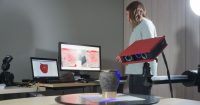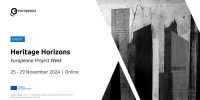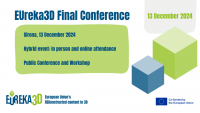Update for the Reader: Starting from the 1st of December 2012 the coordination of the EuropeanaPhotography project is transferred to the University of Leuven. Alinari 24 Ore withdrew from the project. The photographic images of Alinari Archives remain nevertheless part of the project content.

Mr. Andrea de Polo, Head of the Digital Imaging Department of Alinari 24 Ore and coordinator of the EuropeanaPhotography project, joins the controlled self-confidence of the businessman with a touch of human warmth that makes you feel immediately at ease. We had a pleasant talk about EuropeanaPhotography (www.europeana-photography.eu) and Alinari 24 Ore (www.alinari.it).
EuropeanaPhotography is about to begin: we know about the project, but what’s mostly remarkable in it?
While Europeana’s collections of images and text items are very impressive, these images are generally photographs of cultural artifacts, rather than being culturally important in their own right – photography as a cultural medium and an art form is rather under-represented.
EuropeanaPhotography is the first feeder project with a focus on old photography. In addition to large amounts of exciting images, it will also deliver some of earliest of all photographs, and the materials needed to trace the development of this new art form from its inception in the late 1830’s to the middle of the 20th century.

And then we have a nice group of partners.
Yes, the content providers of EuropeanaPhotography come also from countries that are still very much under-represented in Europeana, such as Bulgaria, Slovakia, Lithuania and Denmark – just think that these countries are not even accounted in the last “content by country” details of Europeana, but just aggregated as “Europe”.
Another innovative aspect of the project is the fact that 6 partners – among which, us of Alinari 24 Ore – are from the private sector. They are absolutely new characters to explore, with specific complexity and needs, which will bring into this project challenging issues and exciting opportunities.
They will also demonstrate how private companies can derive commercial value from participation in Europeana, and how private sector will generate benefits to public partners thanks to the mutual cooperation.
Alinari Archive is known as the oldest photographic archive in the world.
Yes, the archive is very old.. it was founded in Florence in 1852 by a family of photographs,
the Alinari brothers, specialized in photographic portraiture and views of works of art and historical monuments: actually it was a pioneer atelier, for studio shootings and photographic campaigns. Time passed and people changed but we kept the same spirit of our founders.
We are proud to say that Alinari is the oldest firm in the world working in the field of photography, image and communication. The main business of the company is related to licensing the use of our photos for books, exhibitions, research purposes. And its Art Printworks is the only one in the world still using the artisan technique of collotype on paper and on silver plate from photographic images.

Sounds quite traditional, Andrea…
In facts I must admit we are a little bit traditional, and it is good for us. Once an American journalist asked me what Alinari is doing so special: we are able to join the technological state of art with photographic tradition of our forefathers. Look to our base: it is an ancient palace in the centre of Florence, it is indeed much more expensive than to run a modern building in the country, in Prato, for example… but we prefer to keep it and preserve it as it is an expression of our roots. No matter if our electricity bills are a little bit higher compared to a modern plant!
I see, but I also would say that you are very open to innovation: in EuropeanaPhotography you will provide about 120.000 items to be digitized.
It is clear that photographic digitization and new technologies in general will help us to restore and preserve our archive, and also to easily share it with colleague companies and users. In EuropeanaPhotography 4 partners out of 19 will use the same technology from Leaf/PhaseOne for professional digitazion, thus allowing an harmonized process and an easier sharing of the files.
And it is so natural that the digital copies permit us to use our most fragile pieces without repeated handlings, and to improve our business.
Who are your target consumers?
A good 40% is represented by publishers and organizations from the publishing field; then we can say that the education channel (teachers, researchers, undergraduate students) is well represented too, about 25%, then we have end-users, professionals, and also institutions.
And what about your Museum?
The Museum is our background, the umbilical cord to Alinari 24 Ore, and a showroom for the Alinari’s Archive. The Alinari National Museum of Photography MNAF currently has in its custody 900.000 vintage prints, and an extraordinary collection of glass plate negatives, color images, stereoscopic images, antique cameras, lenses and lab instruments besides a collection of containers and period frames for a total of around 5.5 million items.
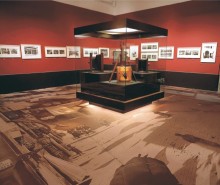 It provides a dedicated service on photographic exhibitions, and educational services for historians, photographic lovers, artists, students and also impaired people.
It provides a dedicated service on photographic exhibitions, and educational services for historians, photographic lovers, artists, students and also impaired people.
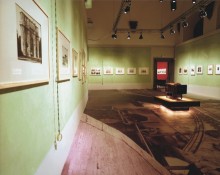 Yes, I know about the project for the visually impaired, but please tell us more about it.
Yes, I know about the project for the visually impaired, but please tell us more about it.
It was an exciting idea to allow blind people to somehow understand photography, further the Braille. We chose 20 masterpieces from our archive, and we commissioned to skilled artisans a 3D reconstruction of the images, choosing proper materials according to the picture that has to be represented. For example, if the picture is a country landscape, in the reconstruction we used pieces of bark, dry leaves, grass and so on: the user will not only understand the structure of the image, but also will feel the atmosphere of the photo. It would be amazing to launch a research project about this in Europe! But I am afraid it would be very difficult.
Actually this initiative is very innovative, although non-digital: it confirms that Alinari group is still a pioneer company. But let’s go back to EuropeanaPhotography, what would you add about it?
I would like to underline that this project is focused on photography, as a medium for contents and as a source of contents. In this moment, while a considerable company as Kodak is going through big troubles, EuropeanaPhotography can represent a bright sign of attention to classical photography.
In the end, Andrea, your opinion to the debate: is digital technology improving or damaging photography?
As I told you before, Alinari is a little bit traditionalist and honestly we think that digital technologies including editing software are making the gap between professional photographers and amateurs thinner. Almost anyone today can make good photos, thus Art is still something different.
On the other hand, digital technologies represent the future and they offer opportunities any company have to care about. Therefore, it is not possible to drop them: we have to accept the challenge and keep up with modern times at our best!
Andrea de Polo, Head of the Digital Imaging Department of Alinari 24 Ore, holds a BFA in Fine Art Photography from Rochester Institute of Technology, USA (1994) and a certificate in Museum studies from the Internal Museum of Photography at George Eastman House, USA. Mr. de Polo has successfully coordinated the ORPHEUS EU project and worked as assistant to the coordinator in the ERMIONE and EURIDICE projects. Mr. de Polo is coordinator of the EuropeanaPhotography project.

More info at www.europeana-photography.eu or contact Andrea de Polo directly by email: andrea [at] alinari.it
*Photos: courtesy of Alinari 24 Ore*


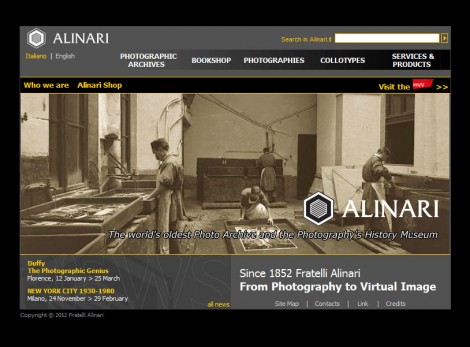
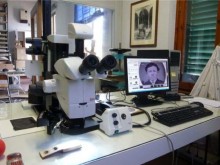
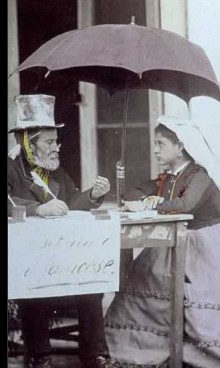
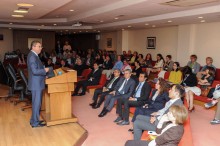
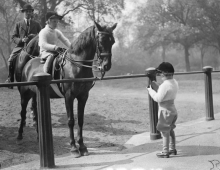
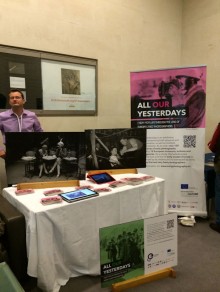
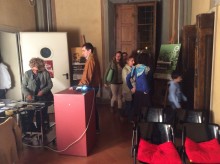
 If you have interesting news and events to point out in the field of digital cultural heritage, we are waiting for your contribution.
If you have interesting news and events to point out in the field of digital cultural heritage, we are waiting for your contribution.








